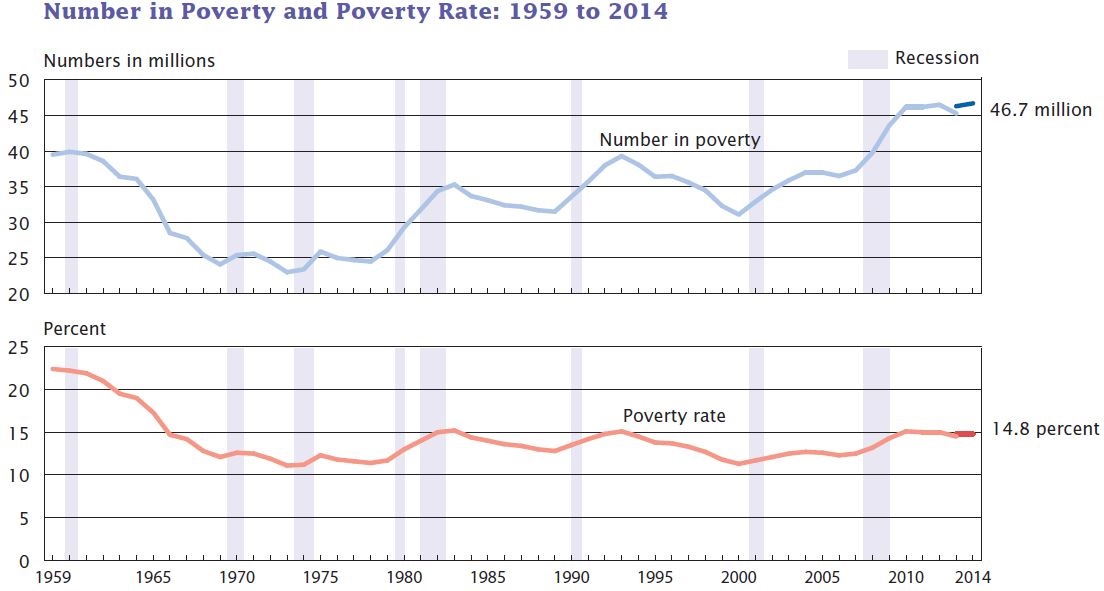Stubborn Poverty in a Year of Growing Costs

Despite the recent economic recovery, the overall U.S. poverty rate and the total number of Americans living in poverty both remain unacceptably high. (Source: Census Bureau, Fig. 4, p. 12)
Last year, as the stock market soared, the poverty rate remained the same, as it had for the previous three years. More than one in seven Americans, or around 46.7 million people, lived in poverty, according to a Census Bureau report released Wednesday. A growing number of them had a bachelor’s degree or more.
As ever, the numbers are worse for some people than others: One in five children lived in poverty. One in four blacks and Latinos lived in poverty.
At the same time, increasing rent rates have been taking up a larger share of people’s earnings, leaving less for food, education, child care, medical expenses and other basic costs. An increasing number of Americans pay more than 30 percent of their wages in rent, a level that is considered by most economists to be unaffordable.
One of the places where rental costs are growing most quickly is Denver, where rent now accounts for about 34 percent of median income, The Wall Street Journal reported in July. I wrote last week about how the rise in rent here has contributed to the displacement of a growing number of low-income families to dilapidated motels on East Colfax.
The Census Bureau’s bad news on poverty was released along with a piece of good news about health insurance. Around 8.8 million more Americans were insured in 2014 than a year earlier—compelling proof that the Affordable Care Act is achieving what it was intended to do. This means more Americans can access preventive care, and get the medical care they need. These national figures in many ways mirror the state-specific findings of the Colorado Health Access Survey released earlier this month.
But health is about much more than medical care. Americans living in poverty are at risk for depression, heart disease and a range of other ills. Today’s news gives us 46.7 million reasons to keep fighting for better health.